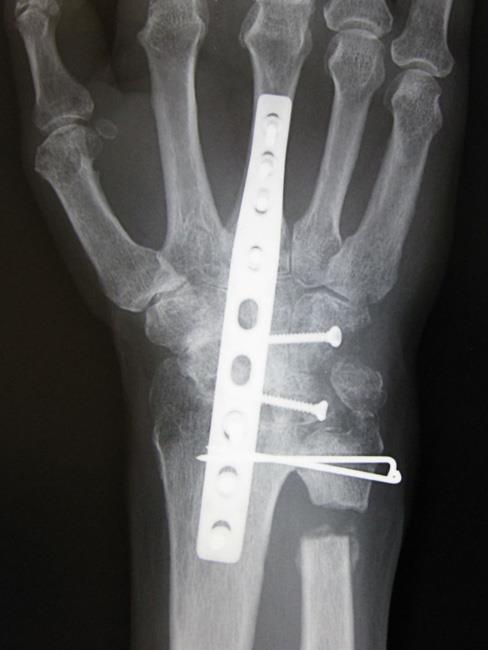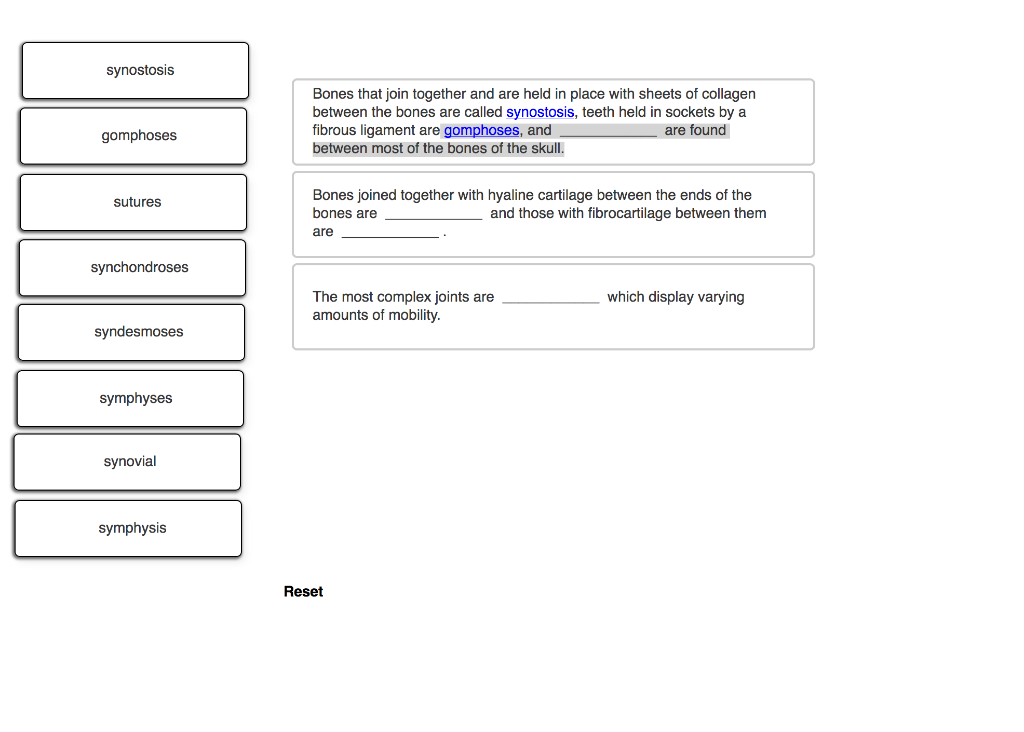
Joints are held together and supported by tough bands of connective tissue called ligaments.
Allow rotation without displacing the bones: for example, the head as it turns from side to side swivels the cervical vertebrae on top of one another. Allow a circular movement – this is how ball and socket joints work: for example, the shoulder. Increase or decrease the angle between the two bones – this only occurs in the long bones of the body (arms and legs): for example, when the arm is bent or extended. Slide one broad and flat surface across another – examples include the bones in the wrist or ankle. Smooth surfaces slip over one another, allowing limited movement, such as the wrist joints. Pivot joint – one bone swivels around the ring formed by another bone, such as the joint between the first and second vertebrae in the neck. Condyloid joint – this permits movement without rotation, such as in the jaw or finger joints. Hinge joint – the two bones open and close in one direction only (along one plane) like a door, such as the knee and elbow joints. Saddle joint – this permits movement back and forth and from side to side, but does not allow rotation, such as the joint at the base of the thumb. Ball and socket joint – the rounded head of one bone sits within the cup of another, such as the hip joint or shoulder joint. The six types of freely movable joint include: Freely movable – most joints within the human body are this type. Slightly movable – two or more bones are held together so tightly that only limited movement is permitted – for example, the vertebrae of the spine. The joints of the skull are called sutures. Immovable – the two or more bones are in close contact, but no movement can occur – for example, the bones of the skull. The three broad classes of joints include: Joints are described by how much movement they allow. This is because greater range of movement reduces the strength of the joint. Generally speaking, the more movement that is possible through a joint, the higher the risk of injury. A joint is also known as an articulation. The shape of a joint depends on its function. Every bone in the body – except for the hyoid bone in the throat – meets up with at least one other bone at a joint. This can have an impact on your overall health and wellness, which is why discovering the benefits of regular chiropractic care at The Joint is so important for so many people.A joint is the part of the body where two or more bones meet to allow movement. 
Bones that join together and are held in place how to#
Your spine is complex, but your chiropractor knows how to deal with it and keep it aligned. This also happens to be the reason seeing a chiropractor for regular adjustments is recommended – because over time things will become misaligned again and lead to degenerative changes in your spine. The chiropractic adjustments done by your chiropractor don’t just put the bones back in proper alignment they also work to put the ligaments back in a proper position so that they can heal. Eventually, this can lead to chronic conditions such as degenerative disc disease and arthritis. Over time this will only become a larger problem because all the things that caused the problem in the first place will probably happen again.

This leads to the ligaments attempting to support a joint that is weakened and often scarred. The swelling that causes all of these problems eventually goes away, but you’re still left with bones not in proper alignment. The muscles that support your spine tighten up to try to keep things together, often causing muscle spasms and pain.

Your body can never be accused of not being smart, and because it’s so smart it tries to immobilize or stabilize a joint that has become injured – including the joints in your spine. When misalignments occur, then the ligaments holding it all together become irritated and swollen, losing their ability to hold your bones in place as they should while you move about. Many things can cause the bones in your spine to become misaligned, including: It’s tricky since your spine needs to be flexible in order to support your body in a healthy way. They work to hold the bones in your spine together while still allowing it to move. The bones in your spine, called vertebrae, are held in place by ligaments. Here’s why regular chiropractic adjustments are needed and why your body doesn’t do a very good job holding your bones together in the first place. A natural question to ask about this concept is why on earth your bones don’t hold themselves in place themselves – and it’s a good question. When your chiropractor talks about your bones staying in place, they refer to it as “holding” the adjustment.
Back to The Joint Chiropractic - Aurora-Cornerstar #38012.







 0 kommentar(er)
0 kommentar(er)
